- Location
- South Florida
Okay, so unless you have a nuisance macro algae that is complex and not normal, we hopefully got you covered. We need photos to continue the thread, send them in. 
The Common Pest Algae. (Diatoms, Hair, Film, and Cyano)
Cyano:
Slime Style:
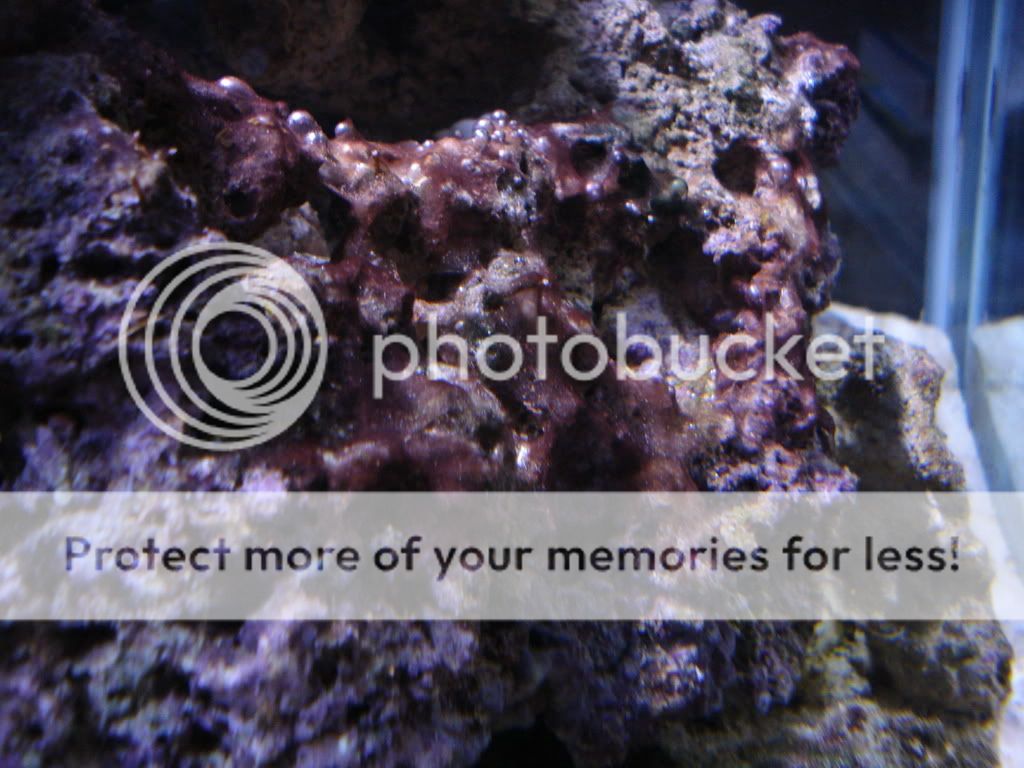
Powdery Nasty Mess on Sand Style:
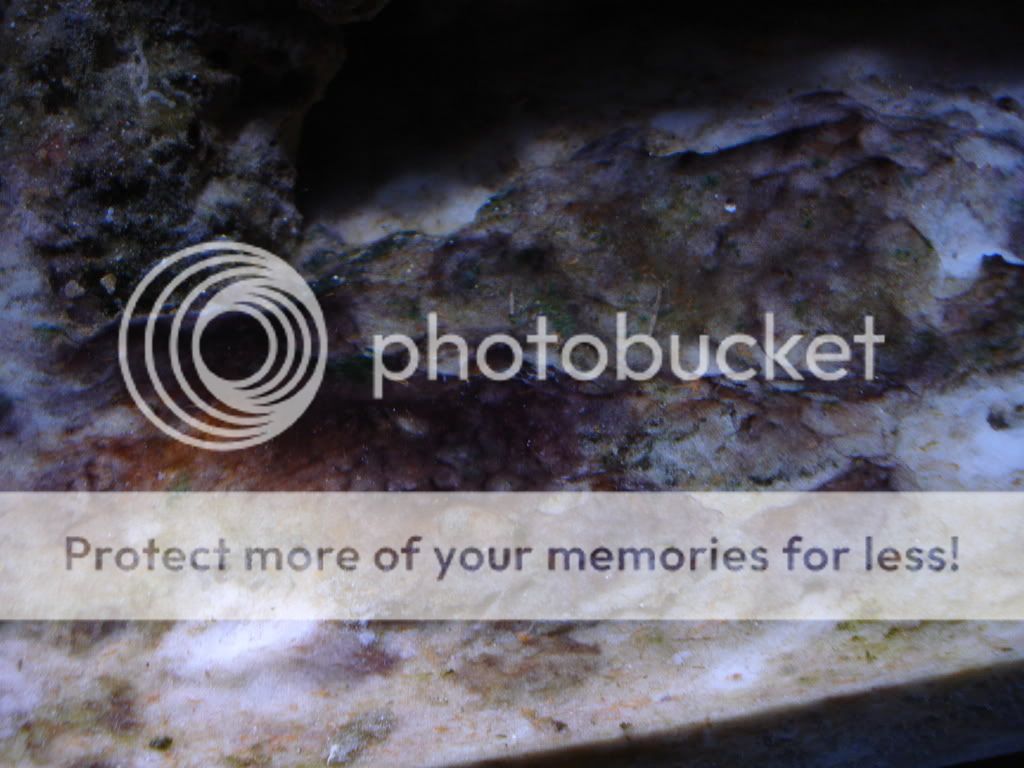
Scientific Description: Red slimey mess. Can be long and stringy, can be brownish, can be powdery on your glass or rocks.
Manual Removal - wipe glass with mag float, etc... Light toothbrush harder corals covered and gorgs, and the rocks. Stir sand and siphon
Clean Up Crew- Ceriths, Nerites and Blue Legs
Why it happened - too much phosphate, and you probably have a phosphate imbalance. Meaning you probably have less than a 20:1 N ratio. Alkalinity may be a factor too.
ratio. Alkalinity may be a factor too.
Starving it out - Use a phosban reactor or a macro like chaeto to take down phosphate. If you have a nitrate problem too, you can add more live rock or rubble to the tank, do some more wcs, add macro, add dsb, etc...
John's Tip - Increase the flow in your tank to take care of dead spots. Are you using RO/DI? Either way check your source water for phosphates.
---------------------------------------------------------------------------------------------------------------
Hair Algae:
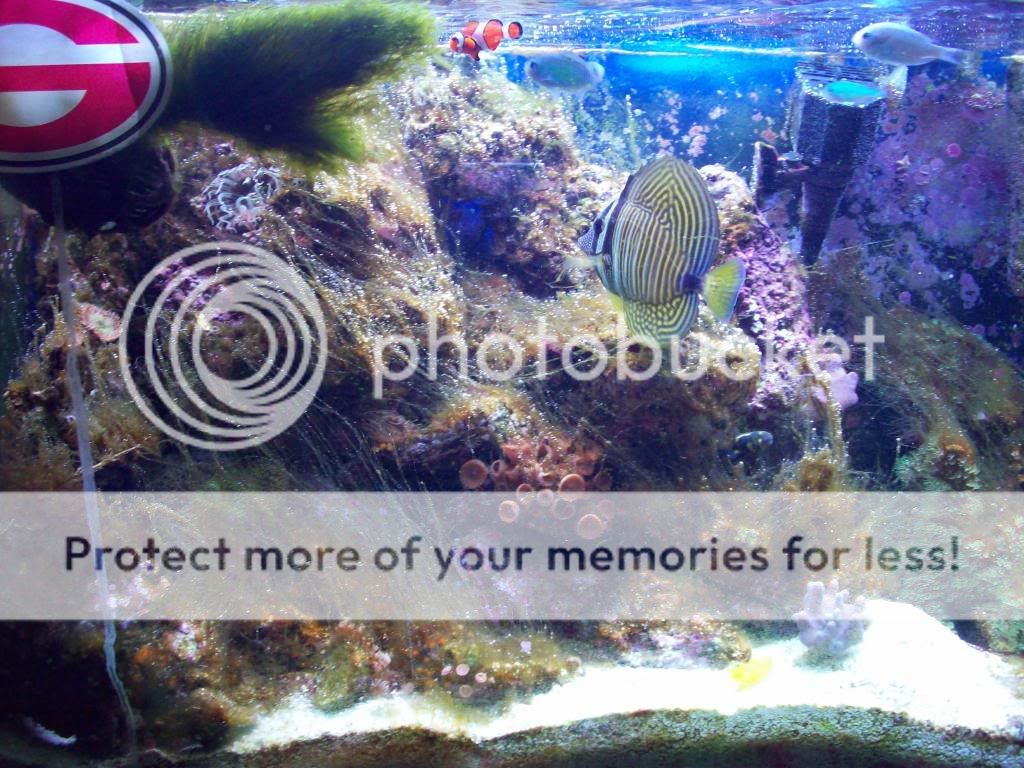
Can also appear brownish like this:
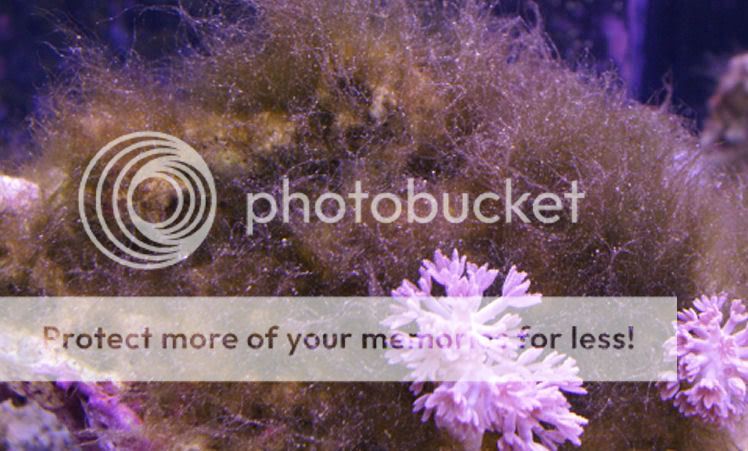
Scientific Description: A variety of green filamentous algae are lumped together under Green Hair Algae, because identification requires a microscope.
Manual Removal - yank it out. If it is growing from the sand sift it out with a net.
Clean Up Crew- Blue Legs, bigger hermits, turbos, limpets, chitons
Why it happened - too much nutrients, both phosphate and nitrate.
Starving it out - Use a phosban reactor or a macro like chaeto to take down phosphate. If you have a nitrate problem too, you can add more live rock or rubble to the tank, do some more wcs, add macro, add dsb, etc...
John's Tip - Older light bulbs grow more hair algae as they drift towards the red spectrum.
----------------------------------------------------------------------------------------------------------------
Diatoms:

Scientific Description: Brown Powdery like substance that can cake in extreme cases like the one above. Usually occurs right after a tank finishes its cycle.
Manual Removal - wipe glass with mag float, etc... A blast from a turkey baster takes care of rocks. Stir sand and siphon.
Clean Up Crew- Ceriths, Nerites and Chitons
Why it happened - bio available silica, probably from sand or rock or something plastic your recently added to the tank.
Starving it out - Diatoms starve themselves out, just try to keep something eating it in the mean time so it isn't so ugly as it slowly removes the silica from your tank.
John's Tip - Pods love diatoms. Left with no predation from fish, and a steady supply of diatoms over a month's time, (you do this by keeping the diatoms under control), you should be able to see rapid pod maturation in your tank.
---------------------------------------------------------------------------------------------------------------
Byropsis sp.

As you can see in distant pictures it looks very similar to hair algae, and the two are often confused. Here is a link to a picture of Byropsis pennata, that is close up:
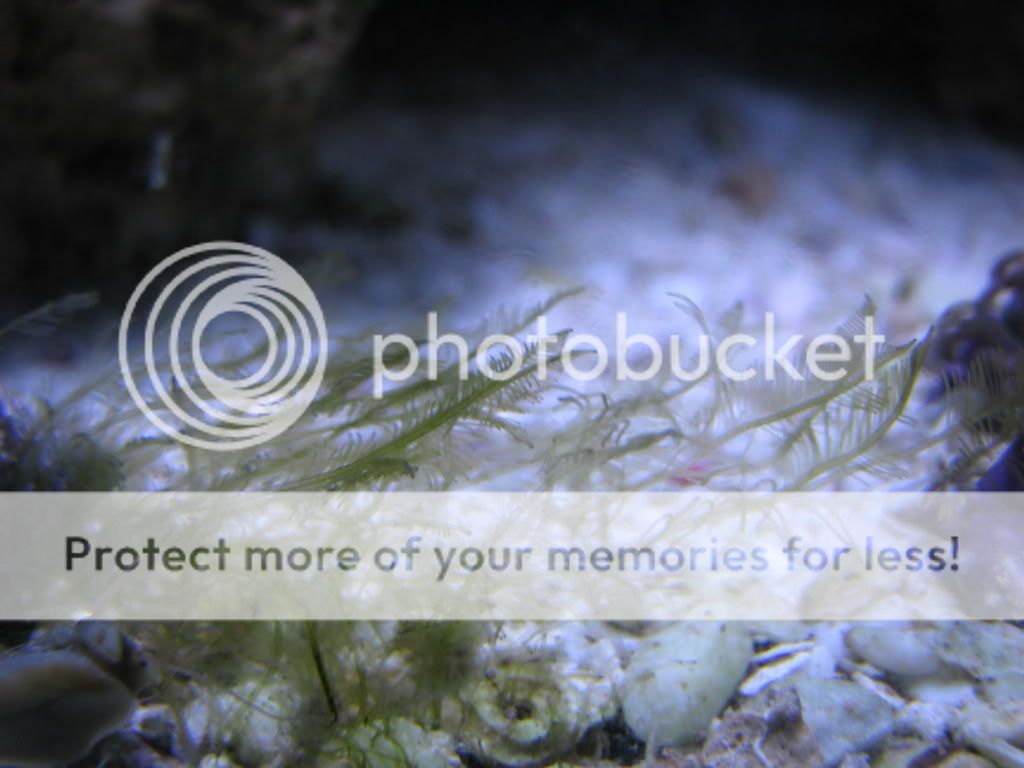
Notice the feather detail on the algae. This is what you are looking for in your tank to confirm or deny identification. If you do have it be prepared for a fight:
1. Try to get on it quickly. If it is only on one rock remove the rock, remove algae, starve of light in a QT.
2. Manual Removal - If that doesn't work or get it all, remove all you can by hand. People will tell you not to do this because it will spread. Let me assure you, left untreated byropsis will spread. Just be careful about it, and if you can pull the rock out to remove it all the better. If takes hold in the sand sift it out with a net. If you don't remove the base of byropsis you are wasting your time.
3. Starve it out - As always if you can get down nutrients nuisance algae has a harder time taking hold, or coming back after manual removal.
4. Repeat steps 2 & 3 aggressively.
5. If that doesn't work try raising your magnesium to very high levels. I don't want to be blamed if this causes losses in your tank, many people have done this with great success and minimal stress, but still....please do your research and don't blame me if something goes wrong. I say QT. Here is a good article:
I say QT. Here is a good article:
Reef Central Online Community - Finally an easy solution to bryopsis!
John's Tip: save your money on CUCs, if it is truly byropsis the normally sold CUC members, (in regular numbers at least), will not finish it off, only pick at it which is what we can do with manual removal in 2 minutes time. Opaque cutouts shaped to cover an area of byropsis can be put between the light source to shade them out. Remember fire and corrosion concerns, tupperware might work, but remember soap, chemical contaminant concerns.... Home Depot bucket lids make good cutouts.
-------------------------------------------------------------------------------------------------------------
Bubble Algae
This is green bubble, one or more of the Valonia species:

Scientific Description: Almost cool looking, almost. Can have a metallic look to it. Once it takes hold it can grow very fast and dominate a tank in a month.
Manual Removal - Don't be clumsy and spread this one. Get em small, cover them with a baster, scrape the baster along the rock, when the Valonia comes off release the plunger and suck it up. Discard and repeat. If you have a lot to do, by the time you are done you will be ready to add new mixed water to complete the water change. Be aggressive with your manual removal.
Clean Up Crew- Emerald Crabs
Why it happened - You didn't quarantine, and you have available nutrients for it.
Starving it out - Use a phosban reactor or a macro like chaeto to take down phosphate. If you have a nitrate problem too, you can add more live rock or rubble to the tank, do some more wcs, add macro, add dsb, etc...
John's Tip - Juvenile Emeralds are better for the task, the smaller the better. Get one per handful amount of the bubble. (After aggressive manual removal, remember to limit based on tank size etc....that recommendation is only based on the bubble algae - it does not consider the crabs needs do your research, etc....)
-------------------------------------------------------------------------------------------------------------------
Lobophora sp. (Usually variegata):

Scientific Description- Brown semi rigid but slippery macro algae. Often confused with plating coralline, the slippery rubbery feel is a give away if you don't want to use scientific methods to determine the id.
Manual Removal - Difficult. Qting the rock in an extended dark cycle is the best way. Good thing it doesn't spread rock to rock too fast. A chisel or a flexible knife like a putty blade works, but you got to get it all, and take some of the rock just to be sure.
Clean Up Crew- Emerald Crabs (best bet here), Sea Hares, some Turbos, Chitons, Limpets, Tangs, Urchins, will pick at it, but it is likely to persist, but at least it will be controlled.
Why it happened - You didn't quarantine, and you have available nutrients for it.
Starving it out - Use a phosban reactor or a macro like chaeto to take down phosphate. If you have a nitrate problem too, you can add more live rock or rubble to the tank, do some more wcs, add macro, add dsb, etc...
John's Tip - Under the right lighting it can take on amazing colors. Also, it is not calcified despite its appearance.
http://www.com.univ-mrs.fr/IRD/atollpol/ecorecat/images/lobovah.jpg
--------------------------------------------------------------------------------------------------------------
Blue Green Cyano:

Description: Forms a slimy mat of green goop for lack of a better term. Usually greenish despite name, but can be darker as it appears in this picture.
Removal: This stuff is difficult to get rid of, but can be done if you persevere. Capable of surviving in low to zero light and without nitrates, it only needs phosphates in your tank to feed off of. You can prevent it by utilizing mangroves and macroalgae that will reduce the phosphates in your tank and prevent it from forming. If you have a break out and are trying to deal with an established problem, then you should consider adding a chemical phosphate removal system to kill it. The setup, (you need a phosban reactor and a filter media), may run you up to $75, before tubing and getting your tank setup going. Increase flow to dead spots.
Fun Fact: Scientists believe Blue Green Cyano was one of the first life forms on our planet.
-----------------------------------------------------------------------------------------------------------------
Dinoflagellates

Scientific Description- Light brownish menace. It looks like snot growing up from the rock or sand, with trapped air bubbles in it. Not to be confused with algae that has an air bubble that has landed on it, dinos make them. Not all species of dinos are bad the one pictured is though, and has caused many aquarists to tear down their tanks.
Manual Removal - Remove the rock and place it in a large saucepan. Add water enough to cover the rock. Boil the tar out of it. Rinse and repeat with scrubbing in between. Let dry for 3 days in sun.
Clean Up Crew- Don't bother.
Why it happened - You didn't quarantine, and you have available nutrients for it.
Starving it out - Use a phosban reactor or a macro like chaeto to take down phosphate. If you have a nitrate problem too, you can add more live rock or rubble to the tank, do some more wcs, add macro, add dsb, etc...
John's Tip - Reduce your phosphates and other nutrients. Iron needs to be controlled. (Everybody forgets about Iron but that can cause problems too.)
------------------------------------------------------------------------------------------------------------
Gelidium:

Scientific Description: Species in this genus, (and the similar Coelthrix sp. which looks similar but is purple-sort of), cling to the rock, and spread from a runner. The branches do not get tall, and they are often found with hobbyist frags.
Manual Removal - Difficult. Macros that have fragile runners and creep along the rock are the hardest to manually remove. Do the best you can.
Clean Up Crew- Emerald Crabs, urchins, sea hares, large turbos, shore shrimp. Small emerald crabs would be my first choice if it took hold in a narrow crevice b/c they could reach it.
Why it happened - You didn't quarantine, and you have available nutrients for it.
Starving it out - Use a phosban reactor or a macro like chaeto to take down phosphate. If you have a nitrate problem too, you can add more live rock or rubble to the tank, do some more wcs, add macro, add dsb, etc...
John's Tip - Don't pass on frags with this stuff, don't put one in your tank. This algae has become extremely common on hobbyist traded frags, every time you add a coral or a rock look for it from now on. If you have it just keep at it, it takes a while but it can be beat back, at least you don't have byropsis.
--------------------------------------------------------------------------------------------------------------
--------------------------------------------------------------------------------------------------------------
Callithamnion aka Cotton Candy Algae

Scientific Description: The pictured specimen is quite good looking, it usually appears as a light pink fuzz. It is not course, and should sway in the current. (Stiff specimens are likely to be other species that look similar). The macro has very fine "branches" that are covered in even finer hairs. The plants are very small.
Manual Removal - Easy if it hasn't taken hold in places your fingers won't fit.
Clean Up Crew- Emerald Crabs, urchins, sea hares, large turbos, and some of the larger hermits.
Why it happened - You didn't quarantine, and you have available nutrients for it.
Starving it out - Use a phosban reactor or a macro like chaeto to take down phosphate. If you have a nitrate problem too, you can add more live rock or rubble to the tank, do some more wcs, add macro, add dsb, etc...
John's Tip - This algae is not widespread in nature, but can be locally abundant. It seems to be coming in on frags, and most of the people I know with it have received it on a traded frag. You can just pick this one out manually if it hasn't made it way to the crevices of your rockwork.
--------------------------------------------------------------------------------------------------------------
Red Bubble Algae
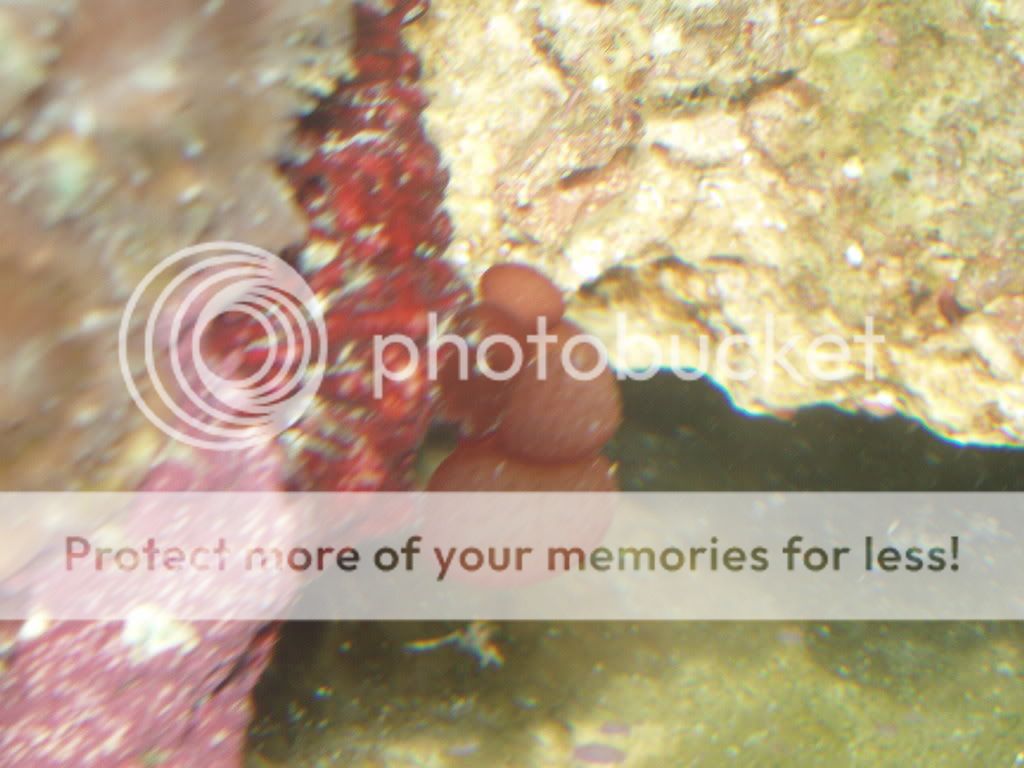
Scientific Description: This is Red Bubble Algae, one of the Botryocladia species, (probably skottsbergeii or pyriformis) . Some of the Botryocladia species, like Botryocladia occidentalis, are desirable. The main difference between an invasive species of Botryocladia and a desirable one is how it grows. Desirable species grow up from branches, and invasive species creep along the rock just leaving hard to remove bubbles. Some are in between both in risk and branch development.
Manual Removal - Don't be clumsy and spread this one. Get em small, cover them with a baster, scrape the baster along the rock, when the bubble comes off release the plunger and suck it up. Discard and repeat. If you have a lot to do, by the time you are done you will be ready to add new mixed water to complete the water change. Be aggressive with your manual removal.
Clean Up Crew- Emerald Crabs
Why it happened - You didn't quarantine, and you have available nutrients for it.
Starving it out - Use a phosban reactor or a macro like chaeto to take down phosphate. If you have a nitrate problem too, you can add more live rock or rubble to the tank, do some more wcs, add macro, add dsb, etc...
John's Tip - Juvenile Emeralds are better for the task, the smaller the better. Get one per handful amount of the bubble. (After aggressive manual removal, remember to limit based on tank size etc....that recommendation is only based on the bubble algae - it does not consider the crabs needs do your research, etc....)
--------------------------------------------------------------------------------------------------------
--------------------------------------------------------------------------------------------------------
All for now, I will keep getting at it when I get some more picture permissions. Feel free to help me out by sending pics of pest algae.
I owe the authors of every photo a credit, I didn't take a single picture. They were all given by the members on this and other hobbyist forums on the internet. I didn't ask the authors for permission to use their name or likeness in this post, only the right to the image so names have been excluded. I would prefer to credit them, and will get around to asking permission.
The Common Pest Algae. (Diatoms, Hair, Film, and Cyano)
Cyano:
Slime Style:

Powdery Nasty Mess on Sand Style:

Scientific Description: Red slimey mess. Can be long and stringy, can be brownish, can be powdery on your glass or rocks.
Manual Removal - wipe glass with mag float, etc... Light toothbrush harder corals covered and gorgs, and the rocks. Stir sand and siphon
Clean Up Crew- Ceriths, Nerites and Blue Legs
Why it happened - too much phosphate, and you probably have a phosphate imbalance. Meaning you probably have less than a 20:1 N
Starving it out - Use a phosban reactor or a macro like chaeto to take down phosphate. If you have a nitrate problem too, you can add more live rock or rubble to the tank, do some more wcs, add macro, add dsb, etc...
John's Tip - Increase the flow in your tank to take care of dead spots. Are you using RO/DI? Either way check your source water for phosphates.
---------------------------------------------------------------------------------------------------------------
Hair Algae:

Can also appear brownish like this:

Scientific Description: A variety of green filamentous algae are lumped together under Green Hair Algae, because identification requires a microscope.
Manual Removal - yank it out. If it is growing from the sand sift it out with a net.
Clean Up Crew- Blue Legs, bigger hermits, turbos, limpets, chitons
Why it happened - too much nutrients, both phosphate and nitrate.
Starving it out - Use a phosban reactor or a macro like chaeto to take down phosphate. If you have a nitrate problem too, you can add more live rock or rubble to the tank, do some more wcs, add macro, add dsb, etc...
John's Tip - Older light bulbs grow more hair algae as they drift towards the red spectrum.
----------------------------------------------------------------------------------------------------------------
Diatoms:

Scientific Description: Brown Powdery like substance that can cake in extreme cases like the one above. Usually occurs right after a tank finishes its cycle.
Manual Removal - wipe glass with mag float, etc... A blast from a turkey baster takes care of rocks. Stir sand and siphon.
Clean Up Crew- Ceriths, Nerites and Chitons
Why it happened - bio available silica, probably from sand or rock or something plastic your recently added to the tank.
Starving it out - Diatoms starve themselves out, just try to keep something eating it in the mean time so it isn't so ugly as it slowly removes the silica from your tank.
John's Tip - Pods love diatoms. Left with no predation from fish, and a steady supply of diatoms over a month's time, (you do this by keeping the diatoms under control), you should be able to see rapid pod maturation in your tank.
---------------------------------------------------------------------------------------------------------------
Byropsis sp.

As you can see in distant pictures it looks very similar to hair algae, and the two are often confused. Here is a link to a picture of Byropsis pennata, that is close up:

Notice the feather detail on the algae. This is what you are looking for in your tank to confirm or deny identification. If you do have it be prepared for a fight:
1. Try to get on it quickly. If it is only on one rock remove the rock, remove algae, starve of light in a QT.
2. Manual Removal - If that doesn't work or get it all, remove all you can by hand. People will tell you not to do this because it will spread. Let me assure you, left untreated byropsis will spread. Just be careful about it, and if you can pull the rock out to remove it all the better. If takes hold in the sand sift it out with a net. If you don't remove the base of byropsis you are wasting your time.
3. Starve it out - As always if you can get down nutrients nuisance algae has a harder time taking hold, or coming back after manual removal.
4. Repeat steps 2 & 3 aggressively.
5. If that doesn't work try raising your magnesium to very high levels. I don't want to be blamed if this causes losses in your tank, many people have done this with great success and minimal stress, but still....please do your research and don't blame me if something goes wrong.
Reef Central Online Community - Finally an easy solution to bryopsis!
John's Tip: save your money on CUCs, if it is truly byropsis the normally sold CUC members, (in regular numbers at least), will not finish it off, only pick at it which is what we can do with manual removal in 2 minutes time. Opaque cutouts shaped to cover an area of byropsis can be put between the light source to shade them out. Remember fire and corrosion concerns, tupperware might work, but remember soap, chemical contaminant concerns.... Home Depot bucket lids make good cutouts.
-------------------------------------------------------------------------------------------------------------
Bubble Algae
This is green bubble, one or more of the Valonia species:

Scientific Description: Almost cool looking, almost. Can have a metallic look to it. Once it takes hold it can grow very fast and dominate a tank in a month.
Manual Removal - Don't be clumsy and spread this one. Get em small, cover them with a baster, scrape the baster along the rock, when the Valonia comes off release the plunger and suck it up. Discard and repeat. If you have a lot to do, by the time you are done you will be ready to add new mixed water to complete the water change. Be aggressive with your manual removal.
Clean Up Crew- Emerald Crabs
Why it happened - You didn't quarantine, and you have available nutrients for it.
Starving it out - Use a phosban reactor or a macro like chaeto to take down phosphate. If you have a nitrate problem too, you can add more live rock or rubble to the tank, do some more wcs, add macro, add dsb, etc...
John's Tip - Juvenile Emeralds are better for the task, the smaller the better. Get one per handful amount of the bubble. (After aggressive manual removal, remember to limit based on tank size etc....that recommendation is only based on the bubble algae - it does not consider the crabs needs do your research, etc....)
-------------------------------------------------------------------------------------------------------------------
Lobophora sp. (Usually variegata):

Scientific Description- Brown semi rigid but slippery macro algae. Often confused with plating coralline, the slippery rubbery feel is a give away if you don't want to use scientific methods to determine the id.
Manual Removal - Difficult. Qting the rock in an extended dark cycle is the best way. Good thing it doesn't spread rock to rock too fast. A chisel or a flexible knife like a putty blade works, but you got to get it all, and take some of the rock just to be sure.
Clean Up Crew- Emerald Crabs (best bet here), Sea Hares, some Turbos, Chitons, Limpets, Tangs, Urchins, will pick at it, but it is likely to persist, but at least it will be controlled.
Why it happened - You didn't quarantine, and you have available nutrients for it.
Starving it out - Use a phosban reactor or a macro like chaeto to take down phosphate. If you have a nitrate problem too, you can add more live rock or rubble to the tank, do some more wcs, add macro, add dsb, etc...
John's Tip - Under the right lighting it can take on amazing colors. Also, it is not calcified despite its appearance.
http://www.com.univ-mrs.fr/IRD/atollpol/ecorecat/images/lobovah.jpg
--------------------------------------------------------------------------------------------------------------
Blue Green Cyano:
Description: Forms a slimy mat of green goop for lack of a better term. Usually greenish despite name, but can be darker as it appears in this picture.
Removal: This stuff is difficult to get rid of, but can be done if you persevere. Capable of surviving in low to zero light and without nitrates, it only needs phosphates in your tank to feed off of. You can prevent it by utilizing mangroves and macroalgae that will reduce the phosphates in your tank and prevent it from forming. If you have a break out and are trying to deal with an established problem, then you should consider adding a chemical phosphate removal system to kill it. The setup, (you need a phosban reactor and a filter media), may run you up to $75, before tubing and getting your tank setup going. Increase flow to dead spots.
Fun Fact: Scientists believe Blue Green Cyano was one of the first life forms on our planet.
-----------------------------------------------------------------------------------------------------------------
Dinoflagellates

Scientific Description- Light brownish menace. It looks like snot growing up from the rock or sand, with trapped air bubbles in it. Not to be confused with algae that has an air bubble that has landed on it, dinos make them. Not all species of dinos are bad the one pictured is though, and has caused many aquarists to tear down their tanks.
Manual Removal - Remove the rock and place it in a large saucepan. Add water enough to cover the rock. Boil the tar out of it. Rinse and repeat with scrubbing in between. Let dry for 3 days in sun.
Clean Up Crew- Don't bother.
Why it happened - You didn't quarantine, and you have available nutrients for it.
Starving it out - Use a phosban reactor or a macro like chaeto to take down phosphate. If you have a nitrate problem too, you can add more live rock or rubble to the tank, do some more wcs, add macro, add dsb, etc...
John's Tip - Reduce your phosphates and other nutrients. Iron needs to be controlled. (Everybody forgets about Iron but that can cause problems too.)
------------------------------------------------------------------------------------------------------------
Gelidium:

Scientific Description: Species in this genus, (and the similar Coelthrix sp. which looks similar but is purple-sort of), cling to the rock, and spread from a runner. The branches do not get tall, and they are often found with hobbyist frags.
Manual Removal - Difficult. Macros that have fragile runners and creep along the rock are the hardest to manually remove. Do the best you can.
Clean Up Crew- Emerald Crabs, urchins, sea hares, large turbos, shore shrimp. Small emerald crabs would be my first choice if it took hold in a narrow crevice b/c they could reach it.
Why it happened - You didn't quarantine, and you have available nutrients for it.
Starving it out - Use a phosban reactor or a macro like chaeto to take down phosphate. If you have a nitrate problem too, you can add more live rock or rubble to the tank, do some more wcs, add macro, add dsb, etc...
John's Tip - Don't pass on frags with this stuff, don't put one in your tank. This algae has become extremely common on hobbyist traded frags, every time you add a coral or a rock look for it from now on. If you have it just keep at it, it takes a while but it can be beat back, at least you don't have byropsis.
--------------------------------------------------------------------------------------------------------------
--------------------------------------------------------------------------------------------------------------
Callithamnion aka Cotton Candy Algae
Scientific Description: The pictured specimen is quite good looking, it usually appears as a light pink fuzz. It is not course, and should sway in the current. (Stiff specimens are likely to be other species that look similar). The macro has very fine "branches" that are covered in even finer hairs. The plants are very small.
Manual Removal - Easy if it hasn't taken hold in places your fingers won't fit.
Clean Up Crew- Emerald Crabs, urchins, sea hares, large turbos, and some of the larger hermits.
Why it happened - You didn't quarantine, and you have available nutrients for it.
Starving it out - Use a phosban reactor or a macro like chaeto to take down phosphate. If you have a nitrate problem too, you can add more live rock or rubble to the tank, do some more wcs, add macro, add dsb, etc...
John's Tip - This algae is not widespread in nature, but can be locally abundant. It seems to be coming in on frags, and most of the people I know with it have received it on a traded frag. You can just pick this one out manually if it hasn't made it way to the crevices of your rockwork.
--------------------------------------------------------------------------------------------------------------
Red Bubble Algae

Scientific Description: This is Red Bubble Algae, one of the Botryocladia species, (probably skottsbergeii or pyriformis) . Some of the Botryocladia species, like Botryocladia occidentalis, are desirable. The main difference between an invasive species of Botryocladia and a desirable one is how it grows. Desirable species grow up from branches, and invasive species creep along the rock just leaving hard to remove bubbles. Some are in between both in risk and branch development.
Manual Removal - Don't be clumsy and spread this one. Get em small, cover them with a baster, scrape the baster along the rock, when the bubble comes off release the plunger and suck it up. Discard and repeat. If you have a lot to do, by the time you are done you will be ready to add new mixed water to complete the water change. Be aggressive with your manual removal.
Clean Up Crew- Emerald Crabs
Why it happened - You didn't quarantine, and you have available nutrients for it.
Starving it out - Use a phosban reactor or a macro like chaeto to take down phosphate. If you have a nitrate problem too, you can add more live rock or rubble to the tank, do some more wcs, add macro, add dsb, etc...
John's Tip - Juvenile Emeralds are better for the task, the smaller the better. Get one per handful amount of the bubble. (After aggressive manual removal, remember to limit based on tank size etc....that recommendation is only based on the bubble algae - it does not consider the crabs needs do your research, etc....)
--------------------------------------------------------------------------------------------------------
--------------------------------------------------------------------------------------------------------
All for now, I will keep getting at it when I get some more picture permissions. Feel free to help me out by sending pics of pest algae.
I owe the authors of every photo a credit, I didn't take a single picture. They were all given by the members on this and other hobbyist forums on the internet. I didn't ask the authors for permission to use their name or likeness in this post, only the right to the image so names have been excluded. I would prefer to credit them, and will get around to asking permission.





